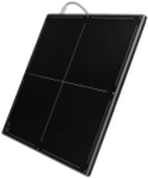There are two types of Flat Panel Detectors (FPD) used in digital x-ray: Direct, using a-Se (amorphous selenium) to convert x-rays directly to electricity; and indirect using a-Si (amorphous silicon) and phosphor plates. These plates are semiconductor products constructed based on thin-film transistor (TFT) film. The direct type, a-Se detector, converts x-ray photons when exposed, without the use of a scintillator. The indirect a-Se FPD use a phosphor plate to convert x-ray photos to normal light, and detects that light.
With indirect FPD, the outermost layer is a scintillator made out of gadolinium oxysulfide (GadOx) or cesium iodide (CsI), which is preferable for a number of reasons including higher resolution and efficiency. The detector, which is composed of a-Si, converts x-rays to light and then to a charge. With direct FPD based on a-Se, the outermost layer is a high voltage bias electrode. This type of detector converts x-rays to charge directly.
Digital x-ray utilizing FPD made with either above-referenced material has distinct advantages over traditional x-ray and Computed Radiography (CR), which use film and imaging plates. In fact, demand for FPD and DR systems is higher than any other x-ray system type worldwide. Some of the distinct advantages of DR over CR and film include:
-
Replaces the use of film or computed radiography (CR) imaging plates
-
Enables easier, faster integration with existing systems in clinical environments
-
Lightweight, small form-factor, high photosensitivity, and lack of image distortion
-
Requires less exposure time (lower dose for patients) Quickly captures and nearly instantaneous viewing of high-quality images
-
Requires less technical expertise to obtain high quality images
-
Has higher speed of image acquisition and increases of patient throughput
-
Cost advantage over film-based x-ray


